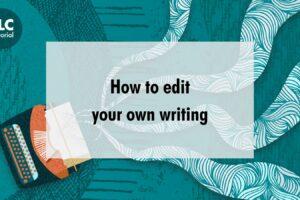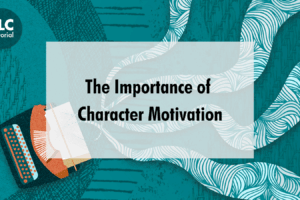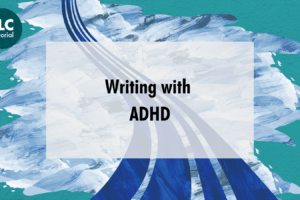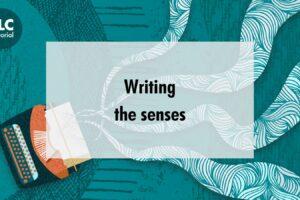Whether you intend to hire a professional editor or not, you want to make sure your writing is the best it can be before you head on to the next stage: pitching to a literary agent, sending the finished manuscript to beta readers, self-publishing the book, or whatever that looks like for you. Whatever your goals, learning how to edit your own writing can be one of the most empowering things you can do as a writer. Here are our top tips for self-editing with confidence.
Understand your goals
What are you aiming for with this piece of writing? Understanding where you want to get to is vital to knowing which are the best steps to get you there. Without a direction of travel, it’s easy to get lost in the weeds. Before you begin the editing process, it’s important to take a moment to clarify your goals.
If your goal is to pitch to an agent or publisher, you will be looking at the writing through the lens of the commercial reader, and you’ll need to bring a real awareness of the current market to the writing. Agents and publishers want to fall in love with your writing, of course, but they are also keenly aware of what sells, and what doesn’t. If you want to edit your own writing in order to send to someone in the industry because your goal is a book deal, you will need to self-edit with an eye on whether this book is squarely aimed at a clear readership who are actively reading (and buying) within an equally clear part of the market. Your pitch needs to be as precise as an arrowhead, your synopsis a clear demonstration of how you can carry a story from beginning to end, and the writing will need to be as clean as possible.
If your goal is to hire a professional editor, you want to make sure you don’t get feedback that tells you everything you already know, that you could probably have corrected had you taken a final pass at it yourself. A professional editor will usually prepare a manuscript assessment report which is boundaried by fee and time. This means that they will focus on the most important elements for improvement and development. You want these things to be the things you are most struggling with, or can’t see for yourself. That’s where the magic of an edit really happens. If your editor has to spend half a page pointing out careless mistakes, that’s precious space they could have spent on some other, deeper element of craft needing your attention.
Make a pre-editing checklist
Now that you have your goal clearly in mind, it’s time to start making a step by step plan for how to edit your own writing. An important part of this is making sure you feel prepared and ready. Here’s an example of questions you may wish to ask yourself for a pre-editing checklist:
- What is my primary goal with this piece of writing? (e.g., submit to an agent)
- What is my primary goal with my self-editing? (e.g., cut 20,000 words/ develop my protagonist’s journey/ finesse the voice)
- What am I most proud of, and what am I less confident about?
- How will I know I am making progress with my self-editing?
- How will I check in with myself, and look after myself through this process?
Edit from big to small
Professional editors will often talk about macros and micros, but what does this mean?
Macro edits are BIG PICTURE (the elements of storytelling): story, structure, setting, characters.
Micro edits are at the level of the LINE (the mechanics of language): sentences, syntax, grammar, voice.
Often it can be helpful to think about editing from big to small, in separate passes. For every writer, the exact mix of ingredients will look different as this will work best if you customise it to the project in hand, rather than use a generic template. But here’s an example:
Edit one: I will edit for STRUCTURE, PACE and PLOT
I know the novel sags somewhere in the final third, so I will focus on how to make the relevant corrections to overall structure, focussing on the proportion of my chapters and scenes. I will think about how the stakes at any given point in the novel affect the pace of action. I will also make a map of plot points and make sure the movement of story along the line of the plot makes sense.
Edit two: I will edit for CHARACTER MOTIVATION, DIALOGUE and VOICE
I feel confident that my protagonist is well developed, but my writing group have pointed out that the antagonist is feeling a little bit too ‘villainy’, so I will work on her character bio and work out her motivations and desires. I need to vary the dialogue a bit and make more use of it throughout the novel as I tend to avoid it. And, I will think about where the narrative voice isn’t quite as consistent, paying close attention to POV.
Edit three: I will edit for CLICHÉ, GRAMMAR and FORMATTING
I will read the work aloud using a printed version, and make notes as I go, underlining anything that doesn’t quite sound right. I am good at avoiding cliché phrases, but sometimes I use clichéd ‘hooks’ and I will identify and get rid of these, or change them. I also need to re-look at new scene breaks and dialogue tags, so will do that on this final pass.
Read aloud
A lot of writers swear by reading their work aloud. If this isn’t available to you, you can also run your writing through a voice recognition software. This is really helpful once you’ve already run through your macros and micros, and now you’re really focussed on voice. It’s the thing agents and publishers most often say they are looking for, and it’s one of the trickiest things to know how to ‘get right’, as it’s often implicit and somewhat intuitive. But there are things that enhance or hinder a clear voice. And these are things that reading aloud can catch, where reading in your head (where you are also more likely to self correct and read what you think you’ve written, not what you’ve actually written). Things like timbre. Cadence. Repetition. Variation in sentence length. Pacing across scenes, chapters and the whole book as dictated by sentence length. How you introduce tension. Whether the dialogue flows naturally.
Create a (personalised) Self Editing Checklist
In our Self Editing courses, led by expert tutors, we support writers to create their Ultimate Self Editing Checklists. The magic of these checklists is that they have grown out of six weeks of learning and getting to know our own and each others’ writing intimately. There is no matrix that is a true one size fits all. But there are some questions you can ask yourself. Here are three of the most important questions, from TLC Self Editing Fiction tutor Jon Barton:
- What is one BIG change (if applicable) you could make to your novel? What was this informed by?
- What one SMALLER thing could you focus on during a single pass?
- How will you know you are done with self-editing, and ready for whatever comes next for you?
Learning how to edit your own writing is challenging, but it isn’t impossible, and it can be fun! Good luck, and enjoy.
Want to learn more about self editing? Sign up is open to our Self Editing courses starting October 2024
Prefer a professional eye? Have a look at our Editing Services, which we’ve been running for writers since 1996








